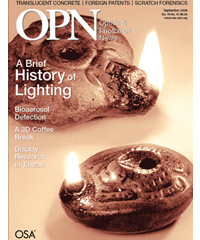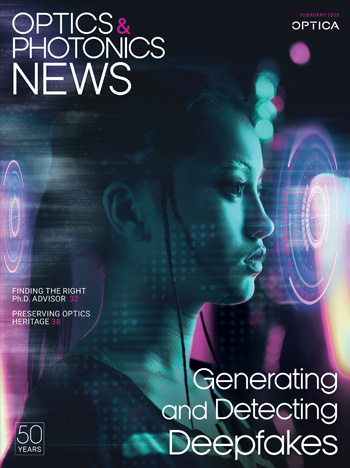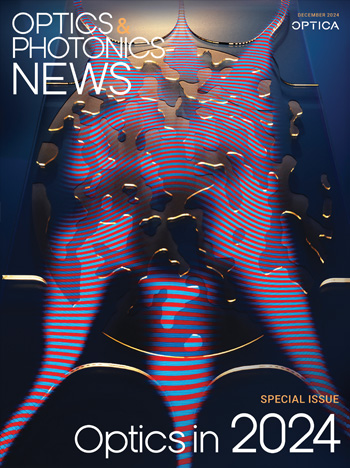
September 2008 Issue
- A Brief History of Lighting
- Using Single-Particle Fluorescence to Detect Bioaerosols
- A 3D Coffee Break: Using coffee cups, cardboard and a few other basic tools, the author transforms his coffee break into an exciting optical experience. Now you can too.
- Display Research at Taiwan’s National Chiao Tung University
- Browse all Issues
Feature Articles
A Brief History of Lighting
In the beginning, there was light. Everyone knows that part. But how did we learn to control and use it for ourselves? This history highlights several technologies that have been used to produce light: flame from wood, oil and gas; arc or glow from electricity; and the fluorescence of minerals.
by David DiLauraUsing Single-Particle Fluorescence to Detect Bioaerosols
Using single-particle fluorescence spectroscopy, scientists are conducting widespread, real-time monitoring of bioaerosols that will deepen their understanding of the effects of airborne particles on human health and climate change.
by Yong-Le Pan, Richard K. Chang, Steven C. Hill and Ron G. PinnickA 3D Coffee Break: Using coffee cups, cardboard and a few other basic tools, the author transforms his coffee break into an exciting optical experience. Now you can too.
Using coffee cups, cardboard and a few other basic tools, the author transforms his coffee break into an exciting optical experience. Now you can too.
by Keigo IizukaDisplay Research at Taiwan’s National Chiao Tung University
The Display Institute at National Chiao Tung University is helping Taiwan to remain a world leader in display science and technology.
by Han-Ping D. ShiehDepartments and Columns
Scratch Forensics
Scratches on optical components are almost always detrimental. Whether formed during fabrication, cleaning or handling, scratches can cause increased scatter, impaired system performance, and, in the case of optics used in laser applications, laser damage. These “scratch forensic” techniques will help you to identify and prevent common sources of optical scratching.
Developing a Strategy for Foreign Patent Filing
There is no such thing as an international patent. So how can intellectual property managers ensure that their inventions are protected in an increasingly global world?
Using Nano-Optics to Control the Phase of Light
Researchers have discovered a way to manipulate the phase of light using arrays of sub-wavelength slits, while still transmitting more light than expected.
Making Policy a Priority
The 2008 Arthur H. Guenther Congressional Fellow reflects on her tenure in the office of Sen. Carl Levin (D-Mich.) and shares her insights into how scientists can help shape U.S. policy.
OPN Talks with John Mather
Our conversation with John Mather, Nobel laureate and FiO keynote speaker.
Toronto’s Rendezvous with Science
This May, in the greater Toronto area, about 15,000 people engaged in a one-day public celebration of sciences called Science Rendezvous.
Optics Research at China’s Fudan University and SIOM
OSA Fellow Barry Masters recounts his ICO-sponsored visit to several world-class educational and research institutions in Shanghai.
Light-Scattering Method Measures Cell Nuclei
Researchers demonstrated a light-scattering technique called angle-resolved low-coherence interferometry (a/LCI) that provides a better method for measuring cell nuclei.
Did You Know?
Translucent concrete.
ADVERTISEMENT
ADVERTISEMENT
Also in this Issue
Book Reviews
In Memory
Remembering Willis Eugene Lamb Jr. and Warren J. Smith.


![An artist’s rendering of a pulse of circularly polarized light hitting a 2D semiconductor. [Illustration by S. Alvey / University of Michigan]](https://opnmedia.blob.core.windows.net/$web/opn/media/images/articles/2025/0125/departments/202501-cover-web.jpg?ext=.jpg)
